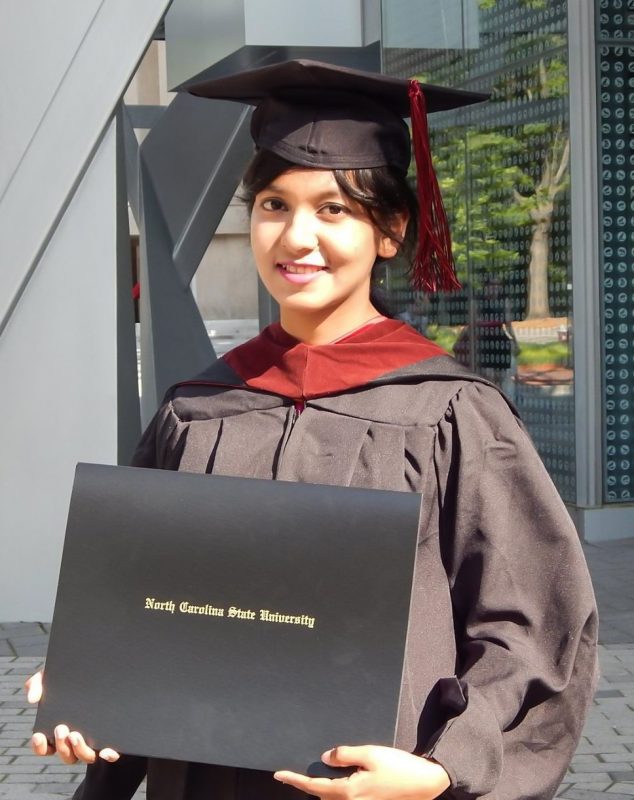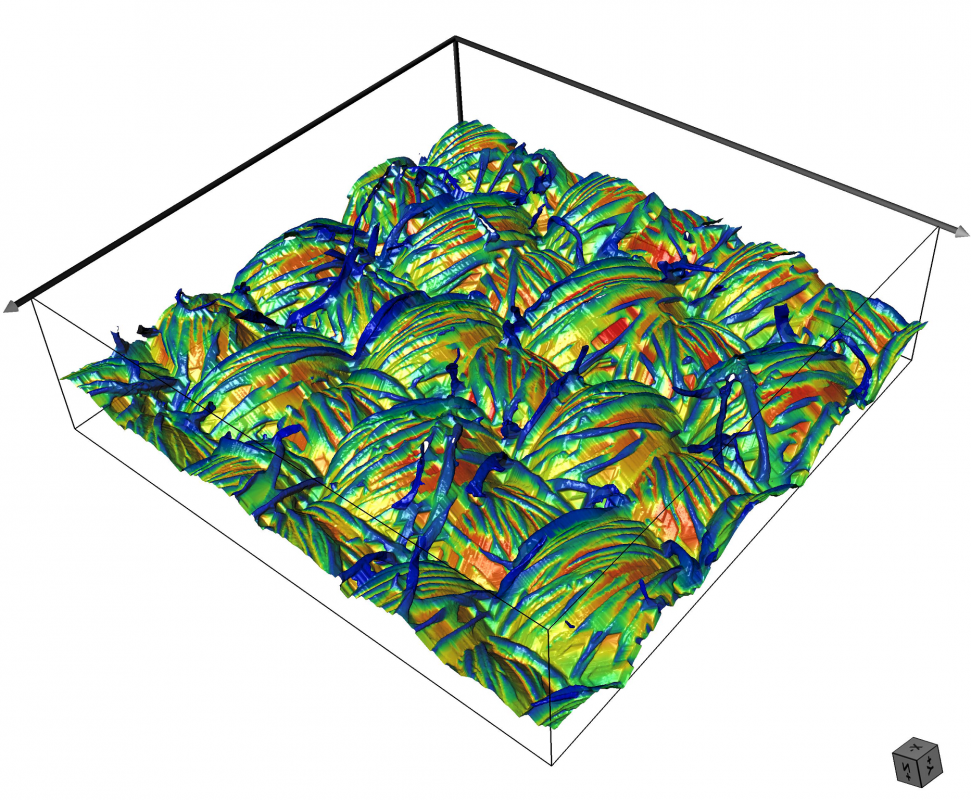Meet Ruksana Baby
Tell me a little about yourself!
I am a final year Ph.D. student in the Fiber and Polymer Science program from Wilson College of Textiles, working with Dr. Kavita Mathur. I completed MS in Textile Engineering from NC State University in 2017 and BS in Textile Engineering from Bangladesh University of Textiles in 2015. I aspire to work in research & innovations, and customer driven product developments & commercialization to benefit people’s lives as well as the brands I work with during my professional endeavor. I love to visit new places, explore natural and architectural heritage, and enjoy different foods. I also read novels, play badminton and other board games in my spare time.

I use the Zeiss Xradia 510 Versa 3D X-ray Tomography System for investigating skin-textiles interface at micro-scale for friction analysis. What I like the most is that this technique provides extensive details of even a very tiny sample without compromising its structure. I also received training to operate the instrument, reconstruct 3D images, and conduct image analysis using Dragonfly Pro software. I plan to use this instrument again in the near future for more in-depth understanding.
What have you been researching and how is it impacting the community?
Textiles are an integral part of our life. Being the primary contact of skin, textiles govern the skin microclimate and play a big role in providing comfort, health and wellness which is significantly influenced by fabric surface properties and structural parameters. Excessive and repetitive friction between skin and textiles, makes the skin compliant and vulnerable causing initial skin redness and irritations. In extreme cases, friction in combination with pressure, shear and moisture expedites the formation of tissue deformation and development of other skin injuries such as pressure ulcers, friction blisters and more severe unwanted problems, especially in people with compromised skin conditions. More than 2.5 million people develop pressure ulcers annually that costs the US healthcare system around 11 billion dollars per year due to increased healthcare utilization! And more than 60,000 Americans die each year directly due to these ulcers. Frictional properties of textiles are critical in identifying patients comfort and ensuring their relief from such friction-induced skin injuries. For instance, in a burned patient after a skin-graft surgery (i.e. the replacement of burned skin with a new skin from another part of the body), an inappropriate friction between the grafted skin and gowns/bedsheets can abrade the skin. This can cause failure of the surgery, leading to another surgery, and increased sufferings of the patients and the family.
In my research I am investigating skin-textile friction at different physical, mechanical and climatic conditions. The main objective of my research is to understand friction at macro- and micro- scale between human skin and woven textiles, and comprehend the influential factors that relate to skin comfort and injuries such as blisters and pressure ulcers. I have developed a non-destructive method to quantify the skin-textile friction interface by using an x-ray micro-computed tomography system. In addition I intend to conduct different instrumental analysis of friction behavior of woven textiles and compare. The objective is to enable developing a reliable method to provide realistic friction measurements. Once we understand the critical factors for skin-textile friction and to what extent these stimulate the development of the injuries, we will be able to optimize them. I believe, after a year from now, with my research findings, we would be able to engineer, design, and develop tailored textiles with optimum frictional properties for people of all ages depending on their skin health, and especially for patients with ulcers and compromised conditions. It will positively impact the personal, social and financial lives of the patients by contributing to their faster recovery as well as reducing the workload in hospitals and nursing homes. In the long run I hope it will help in reducing the no. of pressure ulcer patients and the fatality rate not only in the USA but also in the world! The findings from my research can also be used in diverse application areas such as regular activewear, sports apparel, healthcare textiles, military apparel, and firefighter’s protective clothing.

Image taken from Xradia 510 Versa 3D XRM-CT
What have you learned from your experience at AIF?
The AIF is equipped with an incredible set of instruments capable of providing extensive information from nano to macro scales. When I shared one of my challenges with Dr. Ching-Chang Chung, he immediately came up with a solution and demonstrated the potential of XRM-CT to address my challenge. So from my own experience I have learned that it’s better to ask and learn about the resources available rather than struggling alone.
Is there a staff member at AIF that has helped you?
I appreciate everyone in the AIF for their willingness to help and cooperation. But I would like to specially thank Dr. Anton Jansson for his immense support throughout my training and entire image analysis using Dragonfly. He availed his time whenever I had any questions.
- Categories: